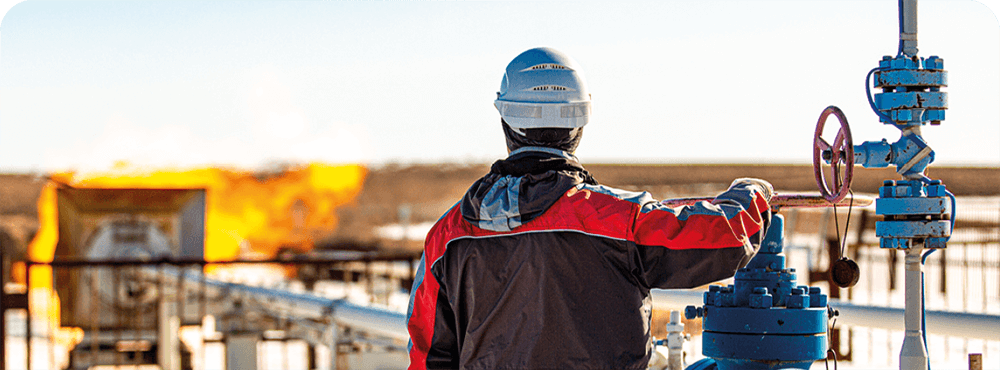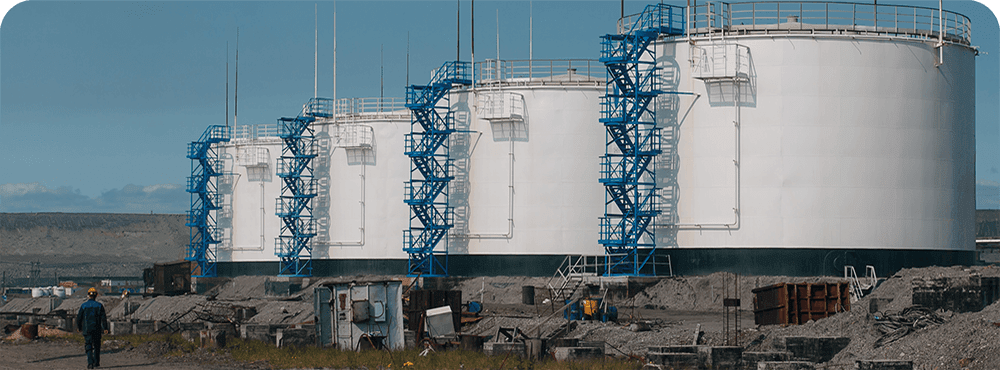Energy consumption and efficiency
SASB EM‑MM‑130a.1Nornickel seeks to cover its primary energy needs from renewable sources, maintaining or reducing energy consumption and increasing energy efficiency. The Company makes continuous efforts to reduce the consumption of energy sources such as natural gas, diesel fuel and coal, as well as to provide subsidiaries with reliable and efficient energy sources in the long term, as set out in Russia’s Energy Strategy to 2035.
Nornickel’s Energy Division is a critical part of the Company’s production process and a crucial link in the uninterrupted supply of power to local communities in the regions of operation.

Key facilities of Energy Division

Norilskgazprom
The company has been producing natural gas and gas condensate since 1969 (the Pelyatkinskoye, Severo‑Soleninskoye and Yuzhno‑Soleninskoye gas condensate fields and the Messoyakhskoye gas field). Gas and gas condensate reserves are estimated at 245.4 bcm and 4,527 kt respectively, while production of natural gas and gas condensate in 2023 came in at 2,720 mcm and 85 kt respectively.

Norilsktransgaz
The company transports natural gas and gas condensate from the fields to consumers in the Norilsk Industrial District. The total length of gas and condensate pipelines is 1,653 km.

NTEC
The company generates, transmits and supplies power and heat to consumers. The energy comes from both renewable (hydropower) and non‑renewable (natural gas) sources. NTEC operates five generating facilities: three thermal power plants (with a capacity of 1,154 MW) and two hydropower plants (with a capacity of 1,102 MW). Power from renewable sources is generated at Ust‑Khantayskaya and Kureyskaya HPPs.

Taimyr Fuel Company
The company is a strategic supplier of light and dark petroleum products to the Far North, covering important commercial and social functions.
More than half of the electricity is generated by two hydropower plants with a total capacity of 1,102 MW:
- Ust‑Khantayskaya HPP – 502 MW;
- Kureyskaya HPP – 600 MW.
The rest of the electricity and heat demand is covered by:
- CHP‑1 – 315 MW;
- CHP‑2– 459 MW;
- CHP‑3 – 380 MW;
with a total capacity of 1,154 MW.
One boiler in each Talnakh, Kayerkan and Alykel, and four boilers in Dudinka provide the district with heat.
The most essential projects implemented by Energy Division to improve equipment reliability, mitigate physical climate risks, enhance energy efficiency and increase output include:
- replacement of a power unit at CHP‑2 in Norilsk;
- reconstruction of the backup diesel fuel storage facilities at CHP‑1, CHP‑2 and CHP‑3, boiler in Dudinka as well as at Ust‑Khantayskaya HPP and Kureyskaya HPP;
- modernisation of the electricity, heat and water supply networks;
- construction of a water intake facility on the Norilskaya River;
- reconstruction of the municipal sewage system in Norilsk;
- modernisation of the gas transmission and gas distribution networks;
- construction and fit‑out of five new gas wells at the Pelyatkinskoye gas condensate field;
- comprehensive oil terminal reconstruction programme: Norilsk, Dudinka and Kayerkan oil depots.
Use of renewable energy sources
Nornickel runs energy infrastructure development initiatives aimed at both increasing the reliability of asset operation and reducing greenhouse gas emissions.
In 2023, the Group‑wide share of power from renewable sources was 55%, up 4 p.p. y‑o‑y. Nornickel’s investment programme includes projects intended to ramp up the use of renewable energy sources, to save fuel and energy resources, and to improve the reliability of power and gas supply.
Due to the harsh climate conditions of the Group’s production assets, the use of solar, geothermal and wind energy is limited.
From time to time, the Company reviews new experimental and industrial carbon capture, transportation and storage solutions from Russia, and monitors confirmed positive experience with the implementation of such solutions at high‑capacity gas heat and power plants.
In 2023, a partnership project was launched to meet the Company’s production plans, involving the construction of small‑capacity (around 300 MW) nuclear power plants in permafrost areas. At the moment, we are searching for the sites for nuclear power plants. One of the criteria is access to the surface of hard rock. This has to do with associated construction costs as well as the safety of operations in process and environmental terms. In the long term, we plan to fully meet the Group’s energy needs through synergies between nuclear, thermal generation and hydropower generation capacities.
GRI 302‑1, 302‑3
| Indicator | 2018 | 2019 | 2020 | 2021 | 2022 | 2023 |
|---|---|---|---|---|---|---|
| Fuel consumption | 148,910 | 144,772 | 141,237 | 151,235 | 141,909 | 137,150 |
| Energy from renewable sources (HPPs) | 14,877 | 15,058 | 15,310 | 14,586 | 16,152 | 16,800 |
| Electricity and heat procurement from third parties | 10,931 | 11,331 | 11,200 | 10,891 | 11,005 | 8,701 |
| Electricity and heat sales to third parties | 18,926 | 18,766 | 17,254 | 19,974 | 18,968Including 4,183 TJ of electricity and 14,785 TJ of heat energy. | 19,216Including 4,203 TJ of electricity and 15,012 TJ of heat energy. |
| Group's total energy consumption (1 + 2 + 3 – 4) | 155,792 | 152,395 | 150,493 | 156,738 | 150,098 | 143,435 |
| Energy intensity, GJ / RUB mlnTo calculate internal energy intensity, the Group’s total energy consumption and the consolidated IFRS revenue were taken as the numerator and the denominator. | 214 | 174 | 135 | 117 | 127 | 116 |
GRI 302‑1
| Indicator | 2018 | 2019 | 2020 | 2021 | 2022 | 2023 |
|---|---|---|---|---|---|---|
| Total fuel consumption | 148,910 | 144,772 | 141,237 | 151,235 | 141,909 | 137,150 |
| Natural gas | 129,335 | 125,329 | 122,216 | 130,867 | 125,934 | 121,643 |
| CoalThe Company uses coal as a chemical element in its production processes, with no coal used for heating purposes. | 1,660 | 2,087 | 2,180 | 1,557 | 2,027 | 1,562 |
| Diesel fuel and fuel oil | 13,788 | 13,535 | 13,939Taking into account the diesel fuel lost as a result of NTEC’s CHP-3 accident on 29 May 2020. | 15,097 | 13,623 | 13,080 |
| Gasoline and jet fuel | 4,127 | 3,820 | 2,902 | 3,715 | 325 | 312 |
| Lignite | – | – | – | – | – | 552 |
GRI 302‑1
| Indicator | 2021 | 2022 | 2023 | Including in 2023 | |
|---|---|---|---|---|---|
| Electricity | Heating and steam | ||||
| Electricity and heat consumption by the Group companies | 60,771 | 60,143 | 59,687 | 30,334 | 29,353 |
| Including: | |||||
| 30,727 | 31,307 | 32,991 | 14,665 | 18,327 |
| 6,439 | 6,045 | 5,907 | 3,993 | 1,913 |
| 9,393 | 9,289 | 9,097 | 6,226 | 2,872 |
| HPP share in total electricity consumption in the Norilsk Industrial District | 52% | 56% | 58% | – | – |
| HPP share in total electricity consumption by the Company | 47% | 51% | 55% | – | – |
| HPP share in total electricity and heat consumption by the Company | 24% | 27% | 28% | – | – |
| Share of renewables in total power and fuel consumption | 9% | 11% | 12% | – | – |
GRI 302‑4
| Indicator | Group total | Including | ||||
|---|---|---|---|---|---|---|
| Polar Division | NTEC | Kola MMC | Medvezhy Ruchey | Other companies | ||
| Total savings, TJ | 469.5 | 4.8 | 163.1 | 171.5 | 54.9 | 75.3 |
| Including: | ||||||
| 55.1 | 4.8 | – | 5.9 | 4.2 | 40.3 |
| 251.3 | – | – | 165.6 | 50.7 | 35.0 |
| 163.1 | – | 163.1 | – | – | – |
The Company annually develops and implements initiatives to save fuel, energy, and water.
In 2023, RUB 4.3 bn was invested in energy efficiency improvements, which helped reduce fuel and power consumption by 469.5 TJ. Key energy efficiency initiatives included replacement of transformers, installation of automated outdoor lighting furnished with twilight photocell and motion sensors, improvement of thermal insulation in pipelines, transfer of mine air heaters to another source of energy, and decentralisation of air supply to mines.
Promising areas for reducing GHG emissions
Climate‑related projects
Nornickel is considering potential climate‑related projects to reduce the impact of its operations on climate change. To that end, the Company entered into an agreement with the Siberian Federal University to develop high‑level approaches to implementing a comprehensive nature‑based climate solution project.
Mineralisation of mining waste
Another promising area for reducing carbon footprint is natural and artificial mineralisation of mining waste.
In the process of mining, rock is extracted from under the ground and goes to concentrators, where grinding takes place and valuable content is separated from waste rock, or tailings. After that, tailings undergo special treatment and are sent to tailing dumps to be distributed across their entire surface. During weathering, which is long‑term exposure to air, minerals contained in Nornickel’s ores react with carbon dioxide to form stable secondary carbonates in tailing dumps. Nornickel’s processes of ore mining and delivery to the surface thus create conditions for carbon dioxide capturing, or natural mineralisation.
In natural conditions, tailings are capable of fixing from 4.5 to 17.9 kg of CO2 per tonne of tailings through chemical reactions subject to the mineral composition of the waste rock. Based on the findings of a natural mineralisation study, we calculated the amount of CO2 assimilated in 2022 and 2023 (around 300 kt of CO2).
The Company is currently developing a methodology to assess and account for the carbon sequestration capacities of tailings. Following an audit and verification by an external auditor, this methodology will be used in the Company’s statements about GHG emissions and absorption capacities.
Going forward, the Company will focus on developing a technology for artificial mineralisation of tailings. New solutions in this area will significantly increase the carbon sequestration capacity of tailings compared to natural mineralisation. Once the technology is implemented across the Company’s sites, it will also substantially reduce the carbon footprint of our products.